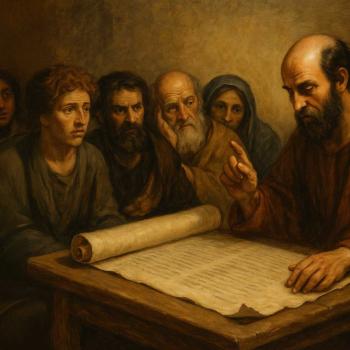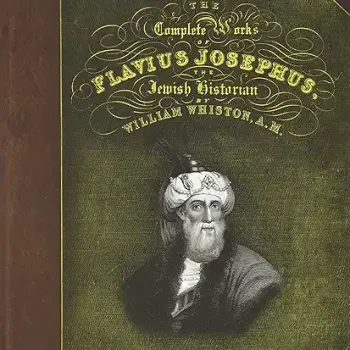 Dr. Larry Hurtado–a leading New Testament scholar, professor at the University of Edinburgh, Scotland, and a friend of mine–has just reviewed Dr. Cambry G. Pardee’s book, Scribal Harmonization in the Synoptic Gospels (Brill, 2019) in the Society of Biblical Literature’s Review of Biblical Literature. Hurtado gives it very high marks.
Dr. Larry Hurtado–a leading New Testament scholar, professor at the University of Edinburgh, Scotland, and a friend of mine–has just reviewed Dr. Cambry G. Pardee’s book, Scribal Harmonization in the Synoptic Gospels (Brill, 2019) in the Society of Biblical Literature’s Review of Biblical Literature. Hurtado gives it very high marks.
Even though I’m not a biblical scholar with a PhD, I’ve been interested in New Testament gospel harmonization for over thirty years. It’s because my first book was a single-narrative harmony of the four NT gospels in the NIV translation entitled The Gospels Interwoven. (Also called “a composite, they are different from the more common parallel-column harmonies.)
But scribal harmonization of the synoptic gospels is about textual criticism and thus is different, and far more scholarly, compared to gospel harmonies. It is about comparing the earliest, extant manuscripts and fragments of these New Testament gospels, all of which are hand-written copies in the Koine Greek language. In Pardee’s Scribal Harmonization, he analyzes all of the extant copies that were produced during the second through the fourth centuries, thus the earliest evidence of the synoptic gospels.
Pardee’s purpose is to learn how extensive are the variants between copies of each of these gospels and whether or not those scribes purposely or accidentally harmonized anything, either in the same copy of that text or from a copy of another gospel text. Folks, this is a very deep study that Mr. Pardee undertook. Larry Hurtado informs us that there has never been a book published like this one. Hurtado says NT scholars, especially textual critics, will be indebted to this book by Pardee for a long to come.
Hurtado first explains that this type of harmonization is best called “assimilation” to another text. He states, “the influence of one gospel upon the text of another is a well-known factor exhibited in textual variants in the gospels. But this is the first full-scale study of the phenomenon across all the Synoptic Gospels and covering all Greek manuscripts dated to the first four centuries CE. This includes the fragmentary manuscripts, as well as the more fully preserved manuscripts of the time.”
Bible believers are will be relieved that Pardee explains most assimilated readings of these ancient manuscripts have been “accidental” or “unconcious.” Pardee presents much of his findings in tables in which he classifies each variant as “unlikely,” “possible,” and “likely” harmonization or assimilation to one or more a parallel gospel texts. In what also should be a relief to Bible believers, Hurtado relates that Pardee shows that the least assimilation occurs with the earliest manuscripts, thus those produced in the second century. Pardee further explains that much of the assimilation occurred due to the scribe’s familiarity with all of the gospels.
The two complete and earliest Greek copies of the entire New Testament are Codex Vaticanus and Codex Sinaiticus. Their names infer where they first discovered, which is in the Vatican and the Catholic Monastery at Mount Sinai. Both are fourth-century documents. Pardee says Codex Vaticanus has very noticeably the least assimilation between the two.
Hurtado relates, “Pardee finds harmonizing variants in 4.7 percent of verses in second and third-century manuscripts and 5.2 percent verses in fourth-century manuscripts.”
Interestingly to me, Pardee also says that in all of these extant manuscripts of the second through the fourth centuries, the copies of, or fragments of, the Gospel of Matthew have the least amount of assimilation compared to such regarding the other two synoptics, which are Mark and Luke. He also says the copies of Mark have the most assimilation. I wonder if that evidence makes weaker the Two-Source Hypothesis of the synoptic gospels, which represents an effort to explain the so-called Synoptic Problem. It is that the Gospel of Mark was written first and both it and a hypothetical document consisting of sayings of Jesus, which scholars call “Q” because it refers to the first letter of the German word quelle, which means “source.” This hypothesis, which is very well accepted by the best NT scholars, means that the authors of the gospels of Matthew and Luke mostly used the Gospel of Mark and Q as sources from which to compile their gospels.
The transmission of the synoptic gospels of the New Testament have undergone by far more scrutiny than any other ancient document or documents. And this scrutiny just keeps on affirming the historical reliability of these synoptic gospels. In conclusion, it appears to me that Pardee’s book contributes substantially to this affirmation of the reliability of the synoptic gospels of the New Testament.
[Dr. Larry Hurtado was the guest speaker at the two-day Kermit Zarley Lectures at North Park University in 2008.]












